Burnout doesn’t arrive all at once. It creeps in slowly—disguised as tiredness, masked as busyness, and mistaken for ambition. One day, you’re pushing through another long day thinking you’re just a little stressed. The next, you’re emotionally drained, physically exhausted, mentally foggy, and completely disconnected from the things you once loved. Burnout is real, it’s serious, and unfortunately, it’s increasingly common.
But here’s the good news: you can bounce back. Burnout isn’t a final destination—it’s a warning sign that change is needed. With intention, self-compassion, and the right tools, you can shift from chronic exhaustion to renewed energy, from mental overload to calm clarity, from disconnection to deep alignment.
In this in-depth guide, we’ll walk you step by step through how to reclaim your well-being, one small yet powerful action at a time.
Understanding Burnout: What It Really Is
Burnout is more than just feeling tired. It’s a state of physical, emotional, and mental exhaustion caused by prolonged stress. The World Health Organization classifies it as an occupational phenomenon, but burnout can affect anyone—working parents, caregivers, students, entrepreneurs, and even retirees.
Key symptoms of burnout include
- Constant fatigue, even after rest
- Feeling detached, cynical, or emotionally numb
- Reduced performance and productivity
- Loss of motivation and joy
- Physical symptoms like headaches or digestive issues
It’s important to recognize that burnout is not a personal failure. It’s a natural response to ongoing imbalance—and it’s your body and mind’s way of saying “enough.”
Step One: Acknowledge and Accept
The first and most important step is acknowledging where you are without shame or self-blame. You cannot heal what you deny.
Ask yourself
- Am I feeling emotionally drained most days?
- Do I dread things I once enjoyed?
- Have I become disconnected from my own needs?
Allow the answer to be honest, and give yourself permission to pause. Acceptance is the gateway to transformation.
Step Two: Create Space to Breathe
Before solving anything, your nervous system needs to shift out of survival mode. Burnout thrives in environments where rest is neglected and stress is normalized.
Ways to create space
- Take a digital break for a few hours or days
- Cancel or postpone non-essential commitments
- Sit in silence, even for 10 minutes, without distractions
- Practice deep breathing—inhale for 4, exhale for 6
- Step into nature, if possible, to reset your senses
Creating space isn’t lazy—it’s necessary. It’s in the stillness that you begin to hear what your body and mind have been trying to tell you.
Step Three: Rebuild Your Energy Foundations
Recovering from burnout is not about pushing harder. It’s about restoring your energy reserves slowly and sustainably.
Focus on these key pillars
Sleep Aim for consistent, high-quality sleep. Create a bedtime routine, power down electronics early, and prioritize deep rest as non-negotiable.
Nutrition Nourish your body with whole, unprocessed foods. Focus on stabilizing blood sugar, staying hydrated, and avoiding excessive caffeine or sugar spikes.
Movement Gentle exercise like walking, yoga, or stretching supports blood flow, hormone balance, and emotional clarity without taxing your system.
Rest True rest is not just sleep—it’s anything that allows your nervous system to relax. That includes naps, baths, reading, or quiet hobbies.
Recovery requires treating your body as a friend—not a machine.
Step Four: Redefine Productivity and Worth
Burnout often stems from tying your self-worth to output, perfection, or external validation. To heal, you must rewrite the narrative.
Try these mindset shifts
- You are not your to-do list
- Rest is productive
- Saying “no” is an act of self-respect
- You don’t need to earn your worth—you already have it
Create boundaries around your time, energy, and focus. Prioritize tasks that align with your values, not just your obligations. Permission to be human granted.
Step Five: Reconnect with Joy and Purpose
Burnout drains the color from life, leaving everything feeling gray and mechanical. The antidote is reconnection—to joy, meaning, and purpose.
Start with micro-joy
- Savor your morning coffee without multitasking
- Watch the sunset
- Laugh at a silly video
- Dance in your kitchen
- Hug someone tightly
Then go deeper. Reflect on
- What used to make me feel alive?
- What do I value most in life?
- How can I bring more meaning into my daily routine?
Sometimes purpose is grand. Other times, it’s found in small moments of presence.
Step Six: Establish Support Systems
Burnout isolates. It convinces you that you must handle everything alone. But healing is a team sport.
Ways to find support
- Talk to a trusted friend or mentor
- Join a supportive community (online or in-person)
- Consider therapy or coaching to process emotions and build new habits
- Ask for help—at home, at work, in life
You don’t have to carry it all. Letting someone in is a strength, not a weakness.
Step Seven: Cultivate Emotional Resilience
Resilience doesn’t mean pushing through pain. It means bouncing back gently, adapting without breaking, and feeling your feelings fully without letting them define you.
Daily practices that support resilience
- Journaling to process your thoughts
- Mindfulness or meditation to stay centered
- Gratitude lists to shift focus toward what’s working
- Breathwork or cold showers to build nervous system strength
Resilience is a skill. The more you practice, the more grounded you become—even in chaos.
Step Eight: Design a Balanced Life Moving Forward
The goal isn’t just to escape burnout. It’s to create a life you don’t need to escape from.
Build balance with intention
- Integrate breaks into your day
- Designate time for movement, meals, rest, and joy
- Set tech boundaries (like screen-free evenings)
- Create a weekly “check-in” with yourself to assess energy and needs
Think of balance not as perfection, but as continuous alignment. When something drifts off, you gently realign without judgment.
Step Nine: Be Patient with the Process
Burnout recovery is not a race. It’s a return—to yourself, your truth, your rhythm. There will be good days and bad days. Progress and setbacks. But every step, no matter how small, is movement toward healing.
Encouragement for the journey
- Celebrate small wins
- Speak kindly to yourself
- Don’t compare your recovery to others
- Trust that rest is doing its work
You are not broken. You are simply rebuilding. And that takes time, courage, and compassion.
Step Ten: Embody a New Normal
Once healing begins, the final step is integration—turning your new habits into a lifestyle.
Ask yourself
- What did burnout teach me about myself?
- What boundaries will I keep no matter what?
- What practices truly nourish me?
- How do I want to feel, every day?
When balance becomes your baseline, everything changes. You show up to work, relationships, and life not from depletion—but from overflow.
This is the power of reclaiming your well-being.
FAQs
How do I know if I’m burned out or just tired?
Burnout is chronic and doesn’t improve with rest. It often includes emotional detachment, low motivation, and a sense of hopelessness—beyond normal fatigue.
Can I recover from burnout while still working?
Yes, but it requires boundaries, strategic rest, and support. Micro-recovery and mindful changes can make a big difference.
Is therapy necessary for burnout recovery?
It’s not mandatory but highly recommended. A mental health professional can guide you through emotional healing and teach effective coping tools.
How long does it take to recover from burnout?
It varies by individual. Some recover in weeks, others may take months. The key is consistency, self-compassion, and reducing stressors.
What if burnout keeps returning?
It often signals unaddressed patterns or imbalances. Reflect on your habits, beliefs about productivity, and lifestyle. Adjust your systems to support long-term wellness.
Is burnout preventable?
Absolutely. With regular self-care, boundaries, and balance, many cases of burnout can be avoided or minimized early.


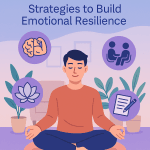
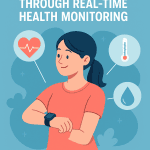
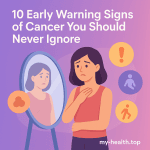
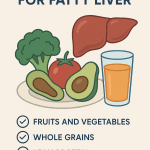
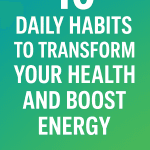

Post a comment